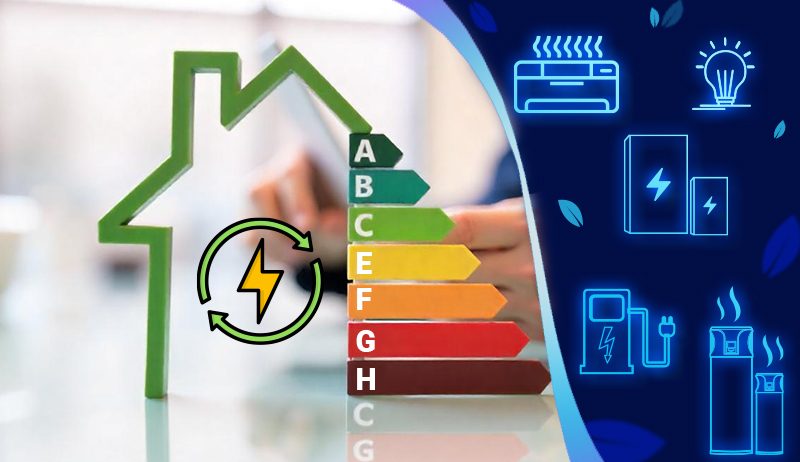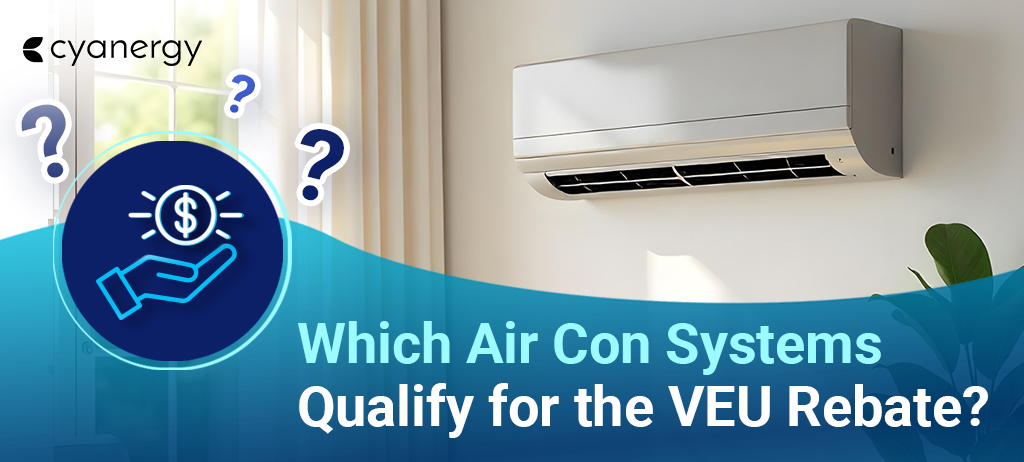Saving energy is becoming more important for businesses in Australia, not just to help the environment but also to save money. Companies of all sizes are now realising that managing energy well helps them work more efficiently and stay competitive.
One way to cut energy costs is to understand a business’s energy use and find the best energy plan. Here are 9 energy-efficient tips for manufacturing in Australia.
Businesses can lower their bills by checking their energy contracts and making minor changes to use less energy. The Australian Government also offers special programs to help companies save energy.
Understanding Energy Use in Australian Businesses
Australia’s businesses, big and small, rely on electricity and gas. Proper energy management is essential because it affects costs and the environment.
Choosing the right energy plan is key to saving money for small businesses. This means comparing different energy deals to find the best one. Manufacturing companies can negotiate better terms with their current provider or switch to a new one with better rates.
But saving energy is about more than just picking a good plan. Businesses should also focus on using energy more efficiently.
While large industries may have specific strategies, smaller companies can also take simple steps to reduce energy waste. The Australian Government’s Energy Advisory Service provides free advice to help businesses improve their energy use.
Knowing when and where energy is used is a big part of energy management. Businesses should check their energy bills, identify areas with high energy use, and look for ways to save, such as upgrading equipment or adjusting daily operations.
By using energy wisely, businesses can lower costs and reduce their environmental impact. Understanding energy use is essential for both financial savings and environmental benefits.
Energy Challenges in Factories and Plants
Factories and industrial plants face several energy-related challenges that can increase costs and reduce efficiency.
Many facilities lack proper energy monitoring systems, making it difficult for plant managers to track daily energy consumption or identify areas where energy is wasted. Without this data, improving efficiency and reducing costs becomes more challenging.
One of the most significant issues in factories is the lack of real-time energy monitoring. Plant managers do not have clear information on how much energy different machines and systems consume without tracking systems.
Older machines, such as outdated pumps and motors, consume more energy than necessary. These machines often operate inefficiently, leading to irregular energy use and higher costs.
Aging machinery uses more energy and causes sudden spikes in electricity demand. These power surges can strain electrical systems excessively, damaging equipment and increasing maintenance costs.
Additionally, electricity providers may charge extra fees when power demand exceeds a facility’s maximum limit, significantly increasing operating costs.
Lighting systems in factories can also contribute to high energy bills. Many facilities use more lighting than necessary, either by over-illuminating workspaces or keeping lights on during low-occupancy hours.
Energy inefficiencies in industrial plants can lead to higher costs and equipment failures. Without proper monitoring, outdated technology and inefficient lighting continue to waste energy.

Importance of Energy Efficiency in Australian Manufacturing Plants
Australian companies focus more on energy efficiency to save money and reduce environmental harm. Businesses can lower costs and improve productivity by using less energy and using it better.
One key way to improve energy efficiency is regularly checking a business’s energy use. Energy audits help identify areas for improvement, such as upgrading old machines or installing energy-efficient equipment.
Switching to LED lighting is a simple and effective way to save energy, as LEDs use much less power than traditional bulbs.
Businesses can also adopt small habits to reduce energy waste, such as adjusting thermostats, turning off lights and machines when not in use, and training employees on energy-saving techniques.
Many companies create energy management plans to set short-term and long-term goals for energy savings.
The Australian Government offers programs like the Energy Efficiency Grants for Small and Medium Enterprises to support businesses. These grants provide funding for equipment upgrades and better energy monitoring.
Additionally, resources such as the industry sector energy.gov.au offer tailored advice to help companies adopt the best energy-saving practices for their industry.
Energy efficiency becomes more important for Australian businesses as energy costs rise and environmental concerns grow. Using energy wisely helps companies save money, increase productivity, and reduce environmental impact.
Energy efficiency also improves workplace conditions. It can make employees more comfortable, boost their morale, and even enhance customer satisfaction.
While some people used to think saving energy meant sacrificing comfort, research shows that energy-efficient workplaces can be more pleasant and productive.
Investing in energy-efficient equipment can lead to significant savings over time. Some businesses have reduced their energy costs by 25-50% while reducing maintenance expenses.
Energy-efficient systems can also speed up production and improve overall business performance.
Energy efficiency is essential for Australian businesses. It helps reduce costs, improve working conditions, and protect the environment.
Given the significant issue of climate change, adopting energy-efficient practices is a smart financial move and a step towards a more sustainable future.
Businesses prioritising energy efficiency will stay competitive while contributing to Australia’s long-term environmental goals.

9 Energy-Efficient Tips for Manufacturing in Australia
In today’s industrial world, energy efficiency is a key factor for manufacturing plants that want to lower costs and stay competitive.
Since factories use much energy, adopting energy-saving strategies reduces environmental impact and brings financial and operational benefits. Below are nine ways manufacturers can reduce energy consumption and improve efficiency.
Conduct an Energy Audit
The first step in saving energy is to conduct an energy audit. This helps businesses understand how much energy they use and identify areas where energy is wasted.
Analysing key systems such as HVAC, lighting, machinery, and compressed air can help businesses find opportunities to reduce energy costs.
An audit also provides a baseline, allowing companies to measure progress over time. Advanced energy analytics can improve efficiency by identifying the most minor energy-saving opportunities.
Optimise HVAC Systems
Factory heating, ventilation, and air conditioning (HVAC) systems consume much energy. To improve efficiency, businesses should schedule regular maintenance, such as cleaning ducts, replacing filters, and fixing leaks.
Upgrading to high-efficiency HVAC systems, especially those with variable-speed drives and energy recovery features, can reduce energy use. Installing programmable thermostats and improving insulation help maintain indoor temperatures without wasting energy.
Switch to LED Lighting
Replacing traditional lighting with LED lights is a simple yet powerful way to save energy. LEDs use up to 75% less electricity than incandescent and fluorescent lights, resulting in lower utility bills.
LEDs also last much longer, reducing replacement and maintenance costs. Additionally, they generate less heat, which helps lower the workload on HVAC systems and reduce energy consumption.
Use Energy-Efficient Equipment
Upgrading to energy-efficient machinery can significantly reduce power consumption. Equipment with Energy Star certification or other efficiency ratings ensures that it meets strict energy-saving standards.
While energy-efficient machines may have a higher upfront cost, they typically result in lower long-term operating expenses. Many modern machines also have smart technology that reduces energy waste during downtime, making them a cost-effective investment.
Monitor and Control Energy Use
Factories can improve efficiency by using advanced energy management systems (EMS) to track and control energy use. Real-time monitoring helps detect unusual energy spikes, allowing businesses to take quick action to fix inefficiencies.
These systems also analyse data to identify patterns and suggest ways to optimise energy consumption. With data-driven insights, companies can make smarter decisions about when and how they use energy.
Implement Custom Energy Solutions
Customised energy solutions are essential for every manufacturing facility’s unique energy needs. Businesses should design and implement tailored strategies considering production processes, equipment types, and energy demands.
Partnering with experts in energy management ensures that facilities can develop realistic and cost-effective plans to improve efficiency.
Reduce Peak Load
Lowering energy use during peak hours can significantly cut electricity costs. One way to achieve this is by participating in demand response programs, where utility companies offer incentives for reducing energy use during high-demand periods.
Factories can also shift energy-intensive tasks, such as charging equipment or running heavy machinery, to off-peak hours. Investing in battery storage systems allows businesses to store energy when demand is low and use it when energy prices are higher.
Train Employees on Energy Conservation
Employees are vital to energy efficiency. Businesses should provide training programs that teach workers how to reduce energy waste, such as turning off unused machines and adjusting equipment settings.
Energy conservation should also be included in new employee onboarding to ensure a culture of sustainability from the start. Training employees on how to use energy management systems can further enhance efficiency efforts.
Invest in Renewable Energy

Switching to renewable energy sources like solar power can significantly lower electricity costs and reduce reliance on fossil fuels. Before investing, businesses should conduct a feasibility study to determine the best renewable energy options based on location, energy needs, and return on investment.
Government incentives and grants can help offset installation costs, making renewable energy a more affordable choice. Pairing solar panels with battery storage ensures a consistent power supply, even during peak hours or power outages.
Adopting energy-efficient practices in manufacturing benefits both businesses and the environment. Lowering energy costs, improving productivity, and reducing carbon emissions contribute to long-term success.
Companies that take steps toward energy conservation will save money and help build a more sustainable future. For expert guidance, contact Cyanergy to implement the best energy-saving strategies tailored to their needs.







